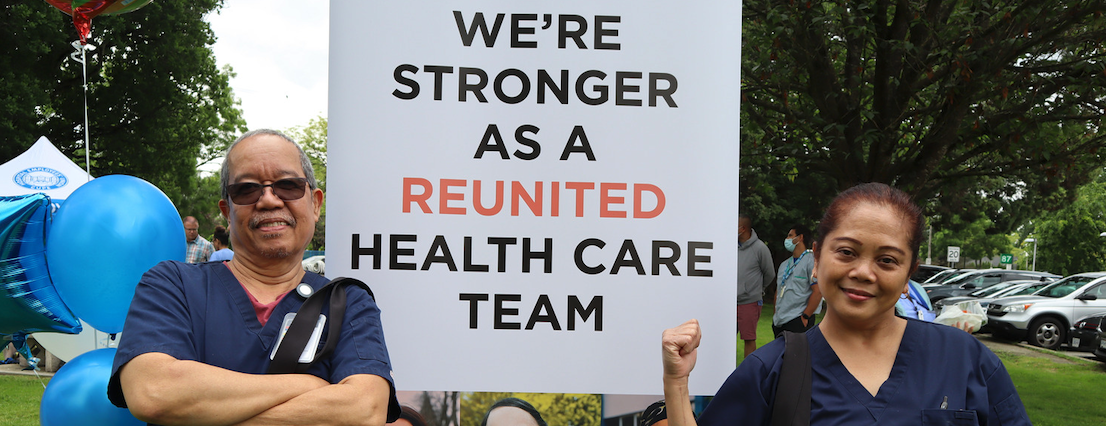
How to Talk to Friends and Family about the B.C. Election
Your friends and family are interested in what you’ve been up to, and what you’re passionate about. Right now the most important issue facing health care – and the HEU members who deliver it – is the provincial election on October 19.
There is so much at stake in the election. The more people we talk to about it, the more we can help them understand the importance of re-electing the NDP, which is a pro-worker government. We also need to help people understand the danger of electing John Rustad’s Conservatives.
Your voice matters. So let’s talk to our family members, our friends, our co-workers and our neighbours. Here are some key messages and tips to help you have these conversations.
Tips:
- Don’t forget to listen. It’s important to hear where they are coming from.
- Your story matters. If you have a personal story, sharing it can be powerful. It can help your friends and family members understand how personal this is for you. For example, maybe you were one of the thousands of HEU members who had your job privatized, and your wages cut, under the BC Liberal government that John Rustad served in.
Talk about actions you are taking, like taking the pledge to vote for health care, or being a Vote Pledge Captain. Show how important this election is to you!
FAQ
Here are some questions you might get asked.
Why should I bother voting? Does it make any difference?
The election will determine the future of healthcare in BC for the next four years. It will also decide many other issues – things like schools, affordable housing, and other vital public services.
What are the differences between the parties?
There are major differences between The BC NDP, and the BC Conservatives, led by John Rustad. We know the NDP is a worker-friendly government. They have demonstrated this, in many ways.
Under John Rustad’s old party the BC Liberals, one in four HEU members – 10,000 hard-working health care workers – lost their jobs. In seniors’ care, it wasn’t uncommon to see a whole health care staff fired. They would then be asked to reapply for their jobs without being able to keep their union, or any of the gains they had made in their last collective agreement.
These are the kinds of risks we would be taking, if John Rustad’s Conservatives were elected.
HEU members have gained so much since the BC NDP started to undo the 16 years of BC Liberal damage to health care. For example:
- The NDP undid anti-labour laws that had taken away rights and protections in workers’ common collective agreements.
- Over the past seven years, nearly 50,000 health care workers have been hired or brought back into the public system under the NDP.
- The NDP brought back more than 5,000 contracted-out hospital housekeepers, dietary workers and security officers into public health care. Some of these members’ wages increased up to seven dollars overnight.
Isn’t John Rustad a Conservative? Why are we talking about what the BC Liberals did?
John Rustad was an influential member of the BC Liberal government that did so much damage to HEU members. Premiers Gordon Campbell and Christy Clark hand-picked him to help them implement their agendas of cuts and privatization. Now he’s leading a party with a different name, but his values have not changed. He is still promising to privatize healthcare and make massive cuts to the social programs we depend on.
Healthcare still has problems. Did the NDP really fix everything?
The BC NDP government has started to fix health care, but if they are not re-elected this fall, the progress we have made together will come to a halt. John Rustad’s Conservatives pose a clear threat to all the gains we have made since 2017.
What about wage levelling?
The BC NDP has added $165 million per year to long-term care, improving wages for HEU members in seniors’ care by “levelling up wages” making compensation higher and more equal across the sector. This has made a big difference in the lives of many HEU members, and we can’t afford to go backwards.
What about infrastructure?
The NDP is investing in health care infrastructure. Right now, six new hospitals are underway, and 17 others are being expanded to meet the needs of their communities.

